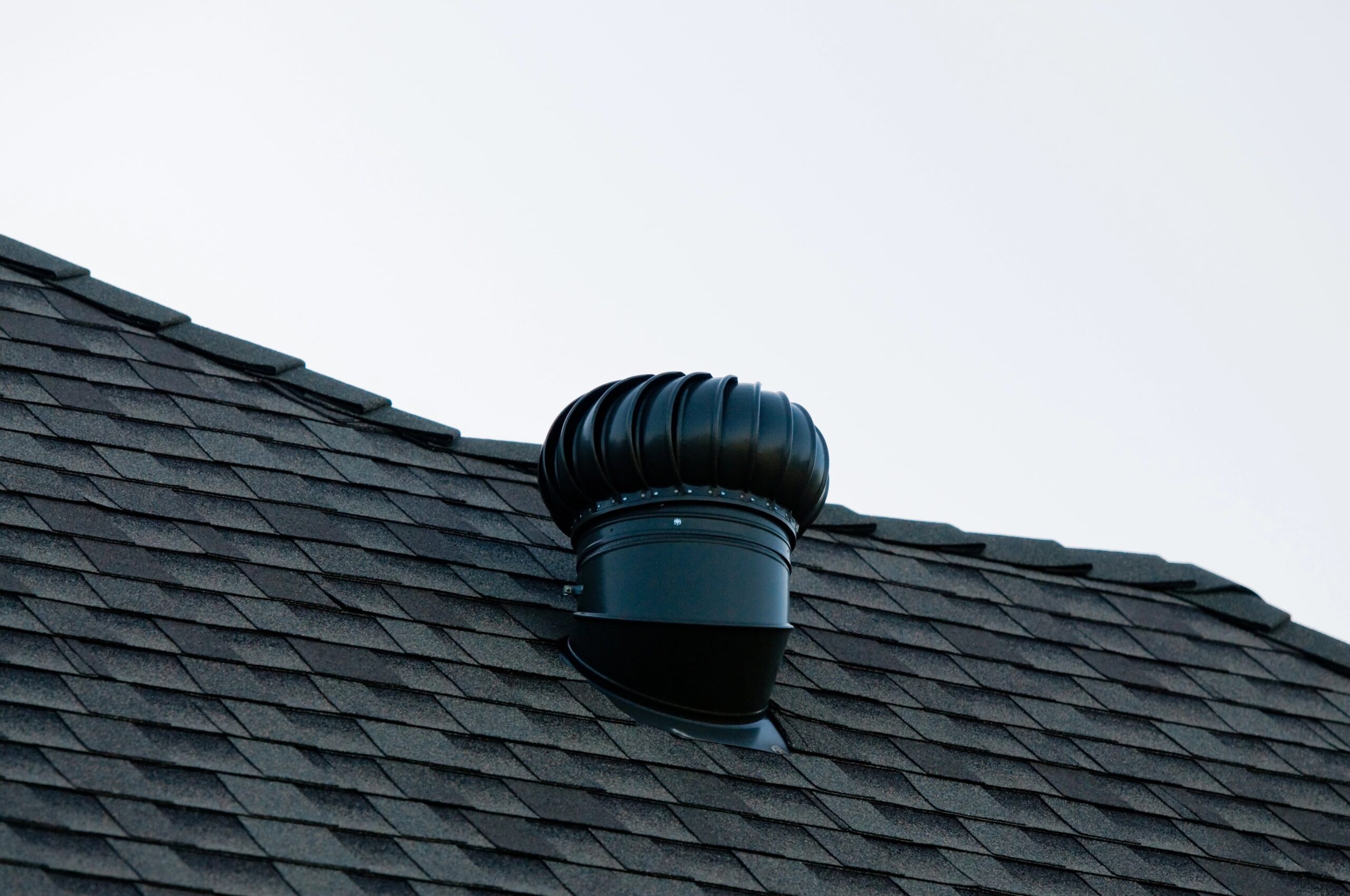Well-designed and well-maintained roof ventilation is absolutely essential. By regulating your attic’s temperature and moisture levels, ventilation prevents heat from building up in the summer and condensation from forming in the winter. This prevents moisture damage, improves energy efficiency, and extends your roof’s lifespan. Whether you’re building a new house or simply upgrading your current roof, take a little time to explore types of roof vents. While your roofer will likely guide the process, you won’t regret learning about the options available and how they work.
What Is Roof & Attic Ventilation?
First, let’s quickly review the basics.
Roof and attic ventilation refers to the way in which air and moisture enter or leave a home. Some forms of ventilation are natural, such as when air flows through windows or cracks. Other forms of ventilation — the type we’ll be discussing today — are an intentional part of the home’s mechanical ventilation system. These might include carefully placed vents, fans, and ducts, which ensure consistent and controlled air movement year-round.
Understanding Types of Roof Vents
A well-balanced ventilation system uses a combination of intake and exhaust vents. For best results, these vents must be properly positioned to guide air in and out of the attic.
Intake Vents
As you might have guessed, intake vents invite air into your home. They draw in cooler outside air, which forces warmer air to keep rising up and out. Typically, intake vents are located lower on the roof. They’re often found under the eaves. The following are two of the most common intake vents:
- Soffit vents run along the full length of the soffit (the underside of the eaves) or stretch between the joists, providing continuous airflow to the attic. They’re the most popular intake vent.
- Drip edge vents are installed along the roof’s edge beneath the shingles. When soffit space is limited or nonexistent, drip edge vents are a great alternative to soffit vents.
Exhaust Vents
Exhaust vents provide an unobstructed exit for the heat, moisturize, and odors that would otherwise be trapped in your attic. They improve your home’s energy efficiency, comfort, air quality, and more. They’re typically placed at the very top of the roof, where hot air collects. The following are some of the most common exhaust vents:
- Ridge vents are located along the peak of a sloped roof, running the entire length of the roofline, and are often covered by shingles. They’re effective and discreet. They can also act as intake vents in certain situations.
- Gable vents are installed on the exterior of the attic, typically near the peak of the gable ends. In specific ventilation setups, they can act as intake vents.
- Roof turbines use blades to spin the wind, pulling air up through the intake vents and out of the house. On windless days, they can also provide passive exhaust.
- Static roof vents, which are also known as roof louvers, fit into the highest peaks of the roof. Depending on the direction of the wind, they may act as exhaust vents or intake vents, but they’re typically used for exhaust.
- Gable mount attic fans can quickly remove large amounts of heat and humidity from your attic. They provide “active” ventilation.
- Powered roof vents, such as powered gable vents, rely on electric or solar power. They pull air up from the intake vents and guide it out the roof. If you want more control over your roof ventilation system, powered roof vents will likely appeal to you.
_____
Do you need help with your existing roof vents? Exploring types of roof vents as you plan a roof replacement? If you live in the Springfield, Missouri, area, give us a call. A local company with more than 20 years of experience, Taylor-Made Roofing is committed to delivering top-line roofing to homes and businesses throughout southwest Missouri. We’re fully licensed and insured and prepared to assist you with all your roofing needs. Whether it’s a new roof, roofing repairs, inspections, maintenance, or gutters, we’ve got you covered. To learn more about our services or request an estimate, contact Taylor-Made Roofing today.

